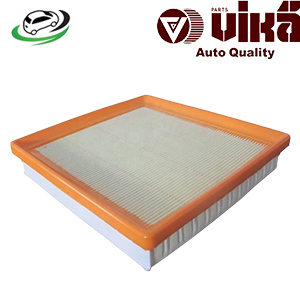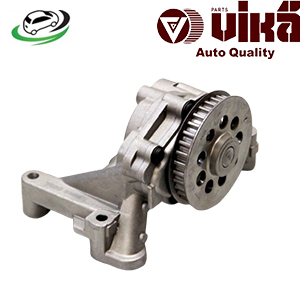-2%
Get AUDI A3 (8P1)/ A1 (8X1 8XK)/ A3 Sportback / VW Golf Plus V/ Golf VI (5K1)/ Jetta III (1K2)/ Passat B6 (3C2)/ Passat B7 (362) Oil Pump 03L115105B
An oil pump is a mechanical device that moves engine oil from the oil pan through the engine to lubricate moving parts. It is responsible for creating the necessary pressure to ensure that oil reaches critical components, such as bearings, pistons, and camshafts. Proper oil circulation is essential to reduce friction, minimize wear, and maintain optimal operating temperatures in the engine.
2. Function of an Oil Pump
The primary functions of an oil pump include:
1. Oil Circulation
- The oil pump circulates engine oil from the oil pan to various engine components. This circulation ensures that oil is delivered where it’s needed to provide lubrication.
2. Lubrication
- By delivering oil to moving parts, the pump reduces friction and wear, preventing engine components from grinding against each other.
3. Cooling
- Engine oil also helps to cool the engine by dissipating heat generated during combustion and friction. The oil absorbs heat from engine components and carries it back to the oil pan, where it is cooled.
4. Contaminant Removal
- As the oil circulates, it picks up contaminants, dirt, and debris from engine surfaces. The oil filter, connected to the oil pump, helps remove these impurities, ensuring that clean oil circulates through the engine.
3. Types of Oil Pumps
There are several types of oil pumps used in automotive applications, each with unique features:
1. Gear Oil Pumps
- Description: Gear oil pumps are the most common type of oil pump. They use two gears (or a gear and a crescent) to create a positive displacement of oil. As the gears turn, they trap oil in the spaces between the teeth and move it through the pump.
- Applications: Widely used in both passenger vehicles and heavy-duty applications due to their reliability and efficiency.
2. Rotary Vane Oil Pumps
- Description: These pumps consist of a rotor with vanes that slide in and out of slots as it rotates. This design creates chambers that trap and move oil through the pump.
- Applications: Common in smaller engines or applications where a compact design is essential.
3. Gerotor Oil Pumps
- Description: Gerotor pumps use an inner rotor and an outer rotor, with the inner rotor rotating inside the outer one. This design creates a series of crescent-shaped chambers that move oil efficiently.
- Applications: Often found in modern engines due to their compact size and efficiency.
4. Diaphragm Oil Pumps
- Description: These pumps use a diaphragm that flexes to create suction and move oil. They are not as common in automotive applications but can be found in specialized systems.
- Applications: Often used in applications requiring low-pressure oil delivery.
4. Components of an Oil Pump
An oil pump consists of several critical components that work together to ensure proper oil circulation:
1. Pump Housing
- The housing encloses the pump components and directs oil flow. It is usually made of durable materials to withstand high pressures.
2. Rotors or Gears
- The primary moving parts of the pump. In gear pumps, these are the gears, while in vane pumps, they are the vanes. These components create the pressure necessary for oil circulation.
3. Oil Intake Port
- The intake port allows oil from the oil pan to enter the pump. It is typically located at the bottom of the pump housing.
4. Oil Outlet Port
- The outlet port directs the pressurized oil to the engine’s lubrication system, ensuring that it reaches the necessary components.
5. Pressure Relief Valve
- This valve prevents excessive pressure buildup in the oil system. If pressure exceeds a certain limit, the valve opens, allowing excess oil to bypass the system and return to the oil pan.
5. Benefits of an Oil Pump
An oil pump provides several key advantages that contribute to engine performance and longevity:
1. Improved Engine Longevity
- By ensuring proper lubrication and reducing friction, an oil pump helps extend the life of engine components, reducing wear and tear.
2. Enhanced Engine Performance
- Adequate oil circulation leads to better engine performance by ensuring that all moving parts operate smoothly and efficiently.
3. Effective Cooling
- The oil pump aids in cooling the engine by dissipating heat, preventing overheating, and maintaining optimal operating temperatures.
4. Contaminant Management
- By circulating oil through the filter, the pump helps remove contaminants and impurities, contributing to a cleaner engine environment.
5. Reliability
- A well-functioning oil pump is crucial for maintaining engine reliability. Regular maintenance and monitoring can prevent pump failure and ensure consistent performance.
6. Common Problems with Oil Pumps
While oil pumps are designed to be durable, they can experience issues over time. Some common problems include:
1. Oil Pump Failure
- Over time, the oil pump can fail due to wear and tear, often resulting in low oil pressure. Symptoms include engine noise, warning lights, and increased friction between moving parts.
2. Clogged Oil Filter
- A clogged oil filter can restrict oil flow, leading to low oil pressure and potentially causing oil pump failure. Regular filter changes are essential for maintaining proper flow.
3. Worn Gears or Rotors
- In gear pumps, worn or damaged gears can result in reduced oil pressure and inefficient circulation. This can lead to increased engine wear and potential damage.
4. Oil Leaks
- Oil leaks can occur due to damaged seals or gaskets. A leak can lead to a drop in oil levels, affecting pump efficiency and overall engine lubrication.
7. Symptoms of a Failing Oil Pump
It is essential to recognize the signs of a failing oil pump to prevent serious engine damage:
1. Low Oil Pressure Warning Light
- Most vehicles are equipped with an oil pressure warning light. If this light illuminates, it may indicate that the oil pump is not generating sufficient pressure.
2. Engine Noise
- A failing oil pump can lead to increased friction between engine components, resulting in knocking or grinding noises during operation.
3. Overheating
- If the oil pump is not circulating oil effectively, the engine may overheat due to inadequate cooling.
4. Oil Leaks
- Visible oil leaks under the vehicle may indicate a problem with the oil pump, seals, or gaskets.
5. Loss of Power
- Insufficient oil circulation can lead to loss of power and performance as the engine components struggle to operate smoothly.
8. Maintenance Tips for Oil Pumps
Regular maintenance is crucial to ensure the longevity and proper functioning of an oil pump:
1. Regular Oil Changes
- Change the engine oil and oil filter at the manufacturer’s recommended intervals. Fresh oil helps maintain proper pump operation and prevents clogging.
2. Monitor Oil Levels
- Regularly check the engine oil level and top it off as needed. Low oil levels can lead to inadequate lubrication and potential pump failure.
3. Listen for Unusual Noises
- Pay attention to any abnormal noises coming from the engine. Knocking or grinding sounds may indicate low oil pressure or a failing pump.
4. Inspect for Leaks
- Routinely check for oil leaks under the vehicle. Address any leaks promptly to prevent low oil levels and potential pump damage.
5. Use Quality Oil
- Use high-quality oil and filters that meet the manufacturer’s specifications. This ensures optimal lubrication and pump performance.
Conclusion
The oil pump is a vital component of any internal combustion engine, playing a critical role in lubrication, cooling, and overall engine health. Understanding its functions, types, benefits, and common issues is essential for maintaining a reliable and efficient vehicle. Regular maintenance and attention to signs of potential problems can help ensure that the oil pump operates effectively, contributing to a longer engine lifespan and enhanced performance. By prioritizing oil pump health, vehicle owners can enjoy a smoother and more reliable driving experience.
Follow us on Facebook for more parts.




Reviews
Clear filtersThere are no reviews yet.